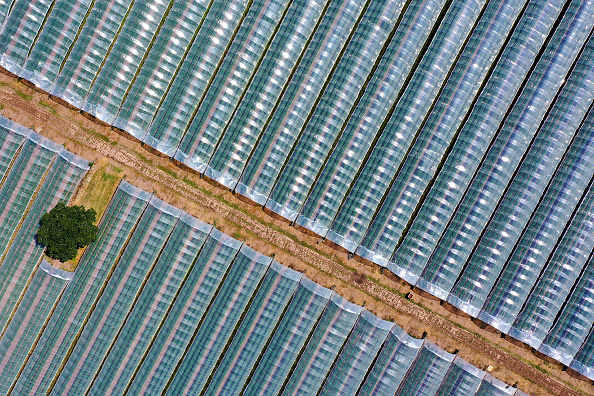Innovation can save our food system from climate threats

ON TUESDAY, people in the UK experienced the hottest day on record. For those living in cities, there were sweltering commutes, walks through parched parks and a newfound gratitude for office air conditioning. Overnight rain broke some of the heat. But further afield, the National Farmers’ Union is warning of lower crop yields as a result of the heatwave. This will mean even higher food prices as inflation hit 9.4 per cent yesterday.
We live in a world where space is at a premium – agriculture comprises 60 per cent of global land displaced by urban expansion since 1970. Against this backdrop, indoor farming is one solution to ramp up food production without turning over more land to agriculture and protecting against extreme weather shocks.
Indoor farming can provide higher crop yield per square metre and reduce food waste through controlled conditions which slim down the chances of crop failure. Shelf life of indoor produce is 3-4 times longer than open-field produce.
We saw the chaotic repercussions of a heatwave yesterday. Clearly, our infrastructure needs to adapt to the changing environment. The consequences of failure to invest were stark. So as we look to make our cities more resilient, we must do the same for the industries which struggle as the weather changes.
Indoor farming either needs purpose-built assets – often using modular techniques – or existing buildings, particularly warehouses, which can be retrofitted to cope with the specific needs of the industry. Warehouses and greenhouses located in and around cities can bring produce closer to where demand is highest.
Over the last two years, there has been a boom in investment for companies delivering groceries to our door in ten minutes or less. There needs to be a shift in focus from short-term convenience to guaranteeing food supplies for decades to come. The future of food is about long-term growth.
According to the UN’s Food and Agriculture Organisation, food production will need to increase by at least 60 per cent. In the West in particular, an ageing population threatens the labour pool – the fruit pickers, the tractor drivers – needed for traditional agriculture. We’ve had three summers now of stories of crops rotting in the ground because of a lack of staff. This is food going to waste, while costs are going up. It is a flagbearer for inefficiency.
There are hurdles: high electricity requirements chief among them. This impinges on the margins of indoor agritech and leave the sector vulnerable to accusations of greenwashing. Indoor farms do require 90 per cent less water than traditional open-field methods. But there needs to be significant development in how we power this sector. Some companies have already started to tackle this, for example through what’s known as “distributed networks”. Think of shipping containers which double up as smaller, automated farms, such as Boston-based Freight Farms.
Thus far, much of this innovation and investment has come from the US. But the European sector has shown strong signs of growth. For example, Amsterdam-based firm Source.ag is using advancement in AI to maximise energy efficient, profit and yield in both greenhouses and vertical farms.
The last few days have made our own homes feel like greenhouses. This is a lesson for us all: we must reorientate our efforts and shore up our most vulnerable industries to our changing climate.
